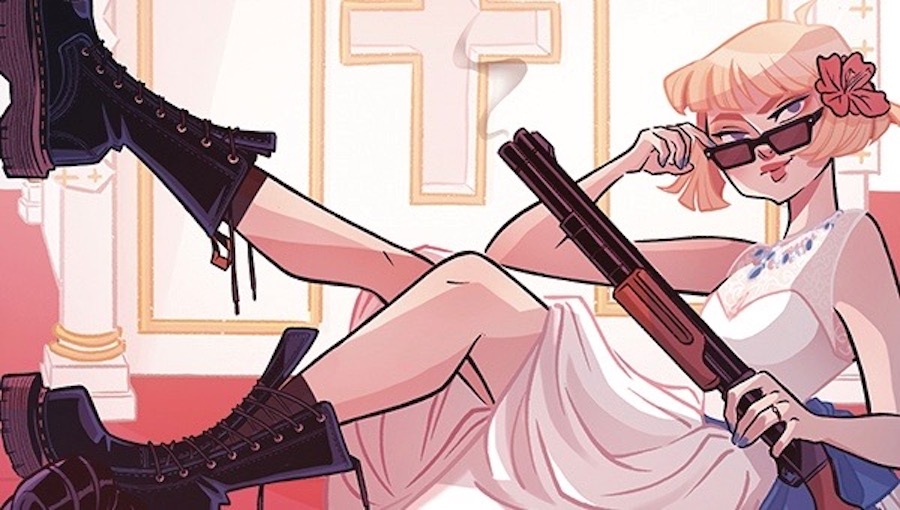Whenever there’s a second issue to a new series, there is usually a lull in the storytelling. It’s as if – from a storytelling perspective – there’s a lull that needs to happen; the plot points and the excitement that occurred in the first issue need to be addressed, and not just for the sake of the characters, but for the reader’s sake, as well. The second issue acts as a sort of expositional chapter of the overall story. We need the breath and the moments to reflect, and after the excitement of the introduction, that’s usually the natural place for it. Often, the second issue is a wonderful look into the lives of the characters we are to invest in, but it is a pause and a focus on the story that does happen.
David Pepose’s second issue of Going to the Chapel decides to completely ignore this comics convention and just go balls-to-the-wall forward with a bunch of hilarious and wonderful moments that make you wonder what exactly you’re reading in the most delightful of ways. Let me clarify: This issue isn’t as action heavy as you might think coming from a series that uses Kill Bill and Die Hard as inspirations; there are moments of action, but we are addressing the characters and their history in this issue. But that aforementioned lull doesn’t seem to be there.
As an aside, something that Pepose excels at is the timing and delivery of humor. Humor isn’t easy to execute, especially in a series that advertises itself on being an action romcom influenced by some of the most famous pop-culture films of our time.
There is a build-up that is happening here, and the action part of the “action romcom” may not appear as self-evident here. That being said, action doesn’t always mean punching and shooting. The action we see in this issue is relegated to progressing the story and pushing it towards a satisfying and explosive sequence. (I guarantee we’re going to see an explosion soon, and I’m all for it.) With that being said, we are following the beats of a story occurring over the course of essentially a few hours. The build-up and the slow down of the action (because I am refusing to consider it a lull) is purposefully designed to entice the reader into solving the bigger mysteries at play here, such as:
- Why did Emily agree to marry Jesse?
- What exactly is the deal with this jewel?
- How does the sheriff know all about the Bad Elvis gang?
- And is there more going on with this family than we’re led to believe?
We should also talk about the art direction of this story. Comic books are a visual medium along with a literary one. (Trust me on this.) If the art doesn’t match up with the story, then it won’t succeed. Luckily for us readers, Gavin Guidry’s art – combined with Liz Kramer’s colors – match perfectly with the tone and style of Pepose’s story. Even Ariana Maher’s letters work in unison to bring this story to life. I have to say that oftentimes, I lose interest when reading an enticing story where the art direction falls flat. But when it’s done right, as Guidry (and Kramer and Maher) have done here, we are treated to a wonderful story that works on all levels.
The purpose of the second issue of any story is to provide more contextual hints and exposition into the nature of the characters that we see. It’s to progress the story in a reasonable and understanding way, giving the readers a moment before they are flung into a new adventure while teasing for things to come.
Honestly, Pepose and his team of storytellers have the ability to excite and progress a story in a way that can keep readers captivated and laughing at the same time.
Creative team: David Pepose (writer); Gavin Guidry (art); Liz Kramer (colors); Ariana Maher (letters)
Publisher: Action Lab: Danger Zone
Click here to purchase.

